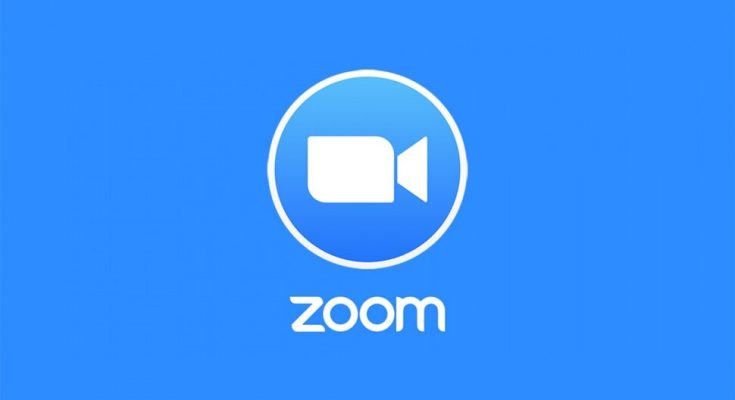Remote work has transformed the way we collaborate, breaking down geographical barriers and allowing teams to connect in real-time from anywhere. As businesses adapt to this new normal, tools that facilitate communication and collaboration have surged in popularity. Among these, Zoom stands out as a go-to platform for virtual meetings and discussions.
But what about document collaboration? Enter Google Docs and Microsoft Word—two giants of the word processing world. While both have their strengths, you might be surprised at how Zoom is carving out its own niche in this space. With features designed not just for video calls but also for collaborative document editing, it’s becoming an essential tool for remote workers everywhere.
Let’s dive deeper into how Zoom rivals traditional platforms like Google Docs and Microsoft Word when it comes to enhancing teamwork from afar.
The rise of remote work and virtual collaboration
The rise of remote work has reshaped the corporate landscape. With technology advancing, teams no longer need to be in the same room to achieve their goals. This shift has opened doors for talent across the globe.
Virtual collaboration tools have become essential in this new era. They enable seamless communication and foster creativity among team members who might be continents apart.
Remote work offers flexibility that traditional setups can’t match. Employees enjoy better work-life balance while companies benefit from reduced overhead costs.
However, this transformation isn’t without its challenges. Maintaining engagement and productivity can prove difficult when interactions occur through screens instead of face-to-face meetings. Hence, effective tools are crucial for navigating these hurdles successfully.
As businesses adjust to permanent remote or hybrid models, finding ways to enhance teamwork will be vital for future success in a connected world.
Introduction to Zoom, Google Docs, and Microsoft Word
Zoom, Google Docs, and Microsoft Word have become staples in the modern workplace. Each platform offers unique features that cater to different needs.
Zoom revolutionized virtual meetings. With its user-friendly interface, teams can connect face-to-face regardless of their location. Screen sharing and breakout rooms enhance collaboration during discussions.
On the other hand, Google Docs stands out for real-time document editing. Multiple users can work simultaneously on a single document while leaving comments and suggestions instantly.
Microsoft Word remains a classic choice for many professionals. Known for its robust formatting options and extensive tools, it’s ideal for creating polished documents.
Together, these platforms shape how we communicate and work remotely. Their integration into daily tasks makes them indispensable in today’s digital landscape.
Features of Zoom and how it compares to Google Docs and Microsoft Word
Zoom has rapidly evolved from a video conferencing tool into a collaborative powerhouse. Its seamless integration with various applications makes it versatile for document sharing and real-time discussions. Users can easily share their screens, allowing teams to work on projects together without missing a beat.
In contrast, Google Docs thrives on simultaneous editing, where multiple users can contribute to documents live. This feature is ideal for brainstorming sessions but lacks the face-to-face interaction that Zoom provides.
Microsoft Word offers robust formatting options and is excellent for polished final drafts. However, its collaboration features aren’t as intuitive as those in Zoom or Google Docs when it comes to remote teamwork.
Each platform brings unique strengths tailored to different aspects of remote work. The choice often depends on whether you prioritize communication or document creation during your collaborative efforts.
Pros and Cons of each platform for remote work
Zoom excels in real-time communication. Video calls enhance personal interactions, making remote work feel connected. Its screen-sharing feature is a game-changer for collaboration.
However, it can be bandwidth-heavy. Poor internet connections may lead to lagging and disruptions during meetings.
Google Docs shines in document creation and editing. Multiple users can collaborate simultaneously with ease. Changes are saved automatically, minimizing data loss risks.
On the downside, its reliance on internet access might impede some users without stable connectivity. The interface can overwhelm newcomers who prefer straightforward tools.
Microsoft Word remains a staple for professionals accustomed to its extensive formatting options and offline capabilities. It’s powerful for complex documents but lacks the collaborative flair of Google Docs or Zoom’s interactivity.
Choosing the right platform depends on team needs and preferences—whether prioritizing seamless communication or robust documentation features.
Case studies of companies using Zoom for document collaboration
Companies across various industries have embraced Zoom for document collaboration, enhancing productivity and teamwork.
One notable example is a marketing agency that shifted to remote work during the pandemic. They utilized Zoom’s screen sharing feature to discuss project drafts in real time. This allowed team members to provide immediate feedback, streamlining their creative process significantly.
Another tech startup adopted Zoom for brainstorming sessions. With its breakout rooms, they could split into smaller groups while working on product documents. The ability to reconvene easily kept discussions lively and focused.
A non-profit organization also found value in using Zoom alongside Google Docs. By hosting virtual meetings where stakeholders accessed shared documents simultaneously, they fostered transparency and collaboration among diverse teams scattered across different locations.
These case studies illustrate how effective communication tools like Zoom can transform document collaboration in any setting.
Tips for maximizing productivity on Zoom and other platforms
To boost productivity on Zoom and similar platforms, start by setting clear agendas for your meetings. This keeps everyone focused and ensures all important topics are covered.
Encourage participants to use video. It fosters engagement and helps build a stronger connection among team members. When faces are visible, communication improves significantly.
Utilize the screen-sharing feature effectively. Share relevant documents in real-time to enhance collaboration. This reduces confusion and allows everyone to stay aligned on tasks.
Take advantage of breakout rooms for larger groups. These smaller sessions can facilitate more intimate discussions or brainstorming, making it easier to generate ideas.
Establish ground rules around interruptions and multitasking during meetings. Encourage active listening so that every voice is heard without distractions from external sources or devices nearby.
Conclusion
The rise of remote work has transformed how teams collaborate. With more people working from home, the need for effective tools has never been greater. Zoom emerged as a favorite for video conferencing, but it’s now stepping up to rival giants like Google Docs and Microsoft Word in document collaboration.
Zoom offers unique features that enhance teamwork during meetings. While primarily known for video calls, its screen sharing capabilities allow participants to view documents in real-time. This turns discussions into actionable tasks quickly and efficiently.
When comparing features, Google Docs shines with its cloud-based editing capabilities. Multiple users can edit a document simultaneously, making it ideal for collaborative projects. Microsoft Word remains a staple with advanced formatting options and robust integrations but lacks seamless multi-user functionality without additional software.
Each platform comes with pros and cons tailored to different needs. Zoom excels at fostering communication through face-to-face interaction, which is crucial when discussing complex ideas or feedback on documents. However, it’s less suited for extensive writing or formatting tasks compared to Google Docs or Microsoft Word.
Case studies illustrate how companies leverage Zoom’s strengths alongside traditional word processors. A marketing agency might hold brainstorming sessions over Zoom while drafting proposals directly in Google Docs—striking the right balance between discussion and documentation.
To maximize productivity across these platforms, consider integrating your tools effectively. Use Zoom not just for meetings but also as an avenue for live feedback sessions on shared documents in real time.
By embracing the benefits of each tool within their respective contexts, teams can elevate their collaboration efforts significantly—and continue driving success despite physical distances separating them from one another.



